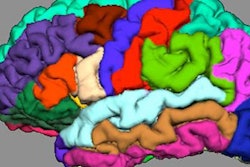Among mental health professionals it's accepted that patients with schizophrenia have abnormal brain morphology, especially in the cortical areas, that manifests at the time of the first psychotic episode. Australian researchers undertook a study to see if these structural brain changes relate to future clinical outcome.
Previous studies have used standard MRI to make a connection between structure and outcome, but the yield has been disappointing, said Stephen Wood, Ph.D., and colleagues. This was due, in part, to MRI's "relative insensitivity...to the functional integrity of the brain" (Archives of General Psychiatry, September 2006, Vol. 63:9, pp. 969-976).
MR spectroscopy (MRS) -- with its ability to measure N-acetylaspartate (NAA), a marker of neuronal integrity -- may have the predictive power to define outcomes in psychotic disorders, wrote the authors, who are from the University of Melbourne and the Royal Melbourne Hospital, as well as the Brain Research Institute and ORYGEN Research Centre, both also located in Melbourne.
For this study, 46 patients (mean age of 21.6 years) were recruited. They presented with at least one of four symptoms: delusions, hallucinations, disorder of thinking or speech, and markedly inappropriate behavior. The majority of the subjects were diagnosed with schizophrenia and were being treated with antipsychotic medicine at the time of imaging.
Proton spectra were acquired on a 1.5-tesla scanner. The left prefrontal cortex and left mediotemporal lobe voxels were assessed to provide the ratio of NAA and choline to creatine and phosphocreatine (NAA/Cr). To derive outcome data, the authors relied on a host of assessment functional scales.
Left mediotemporal MRS data and left prefrontal MRS data were available from all patients except six because of technical difficulties (these six also scored highest for antisocial tendencies).
According to the results, only the NAA/Cr ratio in the left frontal region of interest was significantly related to outcome. This frontal NAA/Cr ratio had significant effects on the Global Assessment of Functioning Scale (GAF), the Social and Occupational Functional Assessment Scale (SOFAS), and the number of admissions. GAF and SOFAS rate an adult's ability to function on social, occupational, and psychological levels.
"These data suggest that a lower front cortex NAA/Cr ratio (presumable a result of lower NAA) may be a marker of an intermediate phenotype of patients with first-episode psychosis with poor response to optimal treatment," the authors concluded. They also posited two possible explanations for this lower ratio: lower NAA/Cr acts as a proxy for reduced resting metabolism or leads to a lack of normal white-matter maturation.
"Awareness of an association betweeen lower NAA/Cr ratios soon after onset of frank psychotic symptoms and poor...functional outcome...may allow a more tailored treatment," they wrote. These therapies could include more intensive case treatment or neuroprotective drugs, they suggested. The authors stated that their results may pave the way for in vivo MRS to become part of the clinical protocol for treating psychosis.
By Shalmali PalAuntMinnie.com staff writer
October 31, 2006
Related Reading
Diagnosis murder: Imaging as a psycholegal defense tool, June 29, 2006
MRI reveals patterns of neurological abnormalities in schizophrenia, April 4, 2006
MRI studies make sense of multifaceted schizophrenia, April 25, 2005
Copyright © 2006 AuntMinnie.com


















